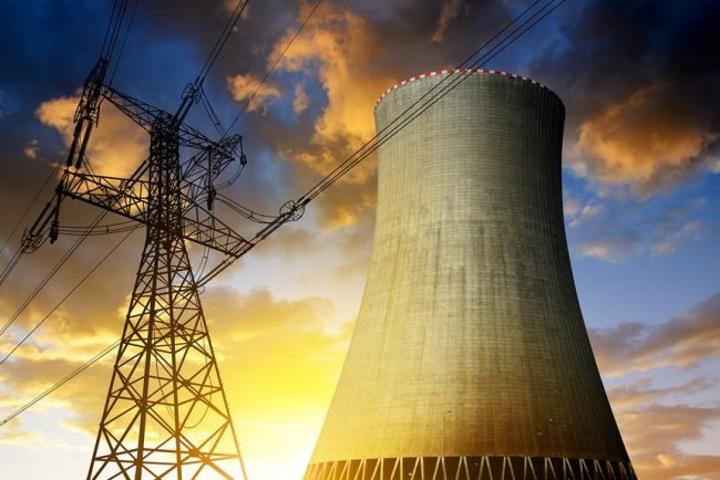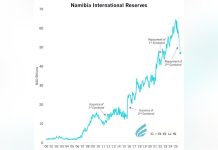Africa-Press – Namibia. With the industrial competition of African economies growing, Namibia has excellent openings for success. Like many other African nations, Namibia suffers from an energy shortage, but it has its own resources to deal with this problem. Thanks to its rich uranium deposits, the country is able to develop nuclear energy, which could provide cheap and clean electricity for Namibia’s manufacture. This trajectory seems to be the most desirable for the economy of Namibia, experiencing the growing pressure of negative climate change.
The 21st-century economy is often called post-industrial, since the ever-increasing role of the service sector. However, the industry remains the most important source of economic growth, advanced technology, and new jobs.
This is of special importance for Africa, where the agricultural economy is still dominant. Therefore, since 1989, on the initiative of the UN, November 20 is celebrated as Africa Industrialization Day. This date reminds us that without a strong industrial sector, Africa, especially Sub-Saharan, will hardly be able to bridge the wealth gap even with middle-income nations.
Top Political Priority
Industrial development has long been a major economic policy task for the Namibian government. The country’s industrial ambition was articulated in Vision 2030, adopted in 2004. This strategy stipulates that Namibia should be an industrialized nation with a high income by 2030.
Four crucial aims to achieve by the end of the current decade were set. Firstly, the manufacturing and services sectors should constitute about 80% of the country’s GDP. Secondly, Namibia will largely export processed goods, which will account for not less than 70% of total exports. Thirdly, a network of modern infrastructure including railways, roads, telecommunications, and port facilities should be established. Fourthly, Namibia is aimed at a critical mass of intellectual workers and the contribution of small and medium businesses to GDP not less than 30%.
In practice, however, industrialization has proven challenging for Namibia. Mining remains the main industrial sector of the country, while manufacturing has a very modest share. At independence in 1990, manufacturing constituted 11% of Namibian GDP. A quarter of a century later, this figure has not changed. Towards the end of the last decade, economic growth in Namibia slowed down, and the COVID-19 pandemic was a severe experience for the country.
Nevertheless, the COVID-19 crisis gave the Namibian government a reason to strengthen its industrial policy. The Ministry of Industrialization and Trade is further committed to developing a competitive industrial sector in the country by having policies and strategies in place pertaining to industrial development to encourage the supply-chain capacity of local industries ensuring an increased contribution of the manufacturing sector to the country’s GDP. The ministry will also continue to develop industrial infrastructure by ensuring the availability of appropriate industrial premises and related infrastructure to make it easy for economic agents to create and operate industries, especially for small and medium companies.
This year Namibian President Hage Geingob mentioned one more aspect of industrial development. “Namibia has made progress in incubating renewable energy assets in the form of green hydrogen and ammonia as part of its energy transition through green industrialization,” he said in September during the general debate of the 76th session of the UN General Assembly. This, Geingob added, will increase Namibia’s economic base and create much-needed jobs, while tackling climate change.
How to Break the Energy Deadlock
Energy shortage remains a major obstacle to accelerating industrialization in Namibia. According to the World Bank, access to electricity in Namibia has grown dramatically from 25% to 55% since the early 1990s, but the country remains critically dependent on neighboring South Africa for electricity supply.
While the Namibian generation mix utilizes primarily hydropower, the majority – about 60% of the total required – of electricity is imported, primarily through bilateral contracts from South Africa’s Eskom and to a lesser extent, Southern Africa Power Pool.
Here the global warming enters. Since the bulk of Namibia’s own electricity is generated by hydropower plants, their productivity depends on the level of water in rivers. In the last decade, Namibia has regularly faced droughts. In 2019 the president even had to declare a state of emergency. This means that hydropower is becoming increasingly risky and unreliable.
As for South Africa, energy crises are endemic for the nation. Coal, notorious for being an intensive source of carbon emissions, is the principal source of energy in South Africa. Sooner or later, the neighboring country will have to abandon coal energy, and whether it will be able to remain a major energy supplier for Namibia is still unknown.
Lack of own energy resources in Namibia regularly leads to power outages which hit industrial output. In July 2016 Canadian Dundee Precious Metals informed that the outage resulted in damage to the refractory lining of its Tsumeb smelter furnace. The company also announced a serious reduction in concentrate throughput due to the three weeks repair.
Meanwhile, the solution to the problem is literally underfoot. Namibia is well-known for its huge deposits of uranium – the most important raw material for nuclear energy. But so far, uranium, which is mined in Namibia, is used for nuclear power plants elsewhere, for instance, in China.
The Namibian government has repeatedly announced plans to build a nuclear power plant, but the matter has not gone beyond discussions yet. Meanwhile, some African nations that do not have their own uranium reserves have moved much further in this direction. This summer the Egyptian government announced its plans to issue permits for the construction of the first in Northern Africa nuclear power plant in El-Dabaa on the Mediterranean as early as next year.
How to Provide an Economic Miracle in the Desert
Another developing country that has decided to stake on nuclear energy is Uzbekistan, located in the very heart of Central Asia. Now, this former republic of the Soviet Union hopes to become the new Asian “tiger”, expecting to repeat the success of South Korea, which made a decisive industrial breakthrough in the 20th century. A large number of export enterprises in the manufacturing sector means that cheap electricity is urgent for Uzbekistan. That is why its government revived the plan for the construction of a nuclear power plant that existed in the Soviet years. If they manage to launch the project next year, another member will join the world nuclear club in the next decade.
What about Namibia?
Unlike landlocked Uzbekistan, Namibia has a lot of logistical advantages for locating export-oriented manufacturing enterprises. Moreover, manufacturing is important for Namibia due to the surplus of agricultural employment in the country. Increasing climatic risks such as desertification require the phasing out of traditional farming methods. For former rural workers, job creation is required, and industry is proving to be a far more efficient way out than precarious wages in the urban informal economy.
Uranium mining is already considered vital for the national economy. In 2020, Namibia was ranked third in terms of its volume after Kazakhstan and Australia. Uranium was among the six minerals that have been declared strategic by the Namibian government.
The development of new deposits will make a significant contribution to ensuring the sustainable economic security of Namibia. In turn, contemporary technologies provide the sustainability of uranium mining as well.
Back in 2010, at the initiative of the Namibian side, geologists from the Russian state corporation Rosatom and the Russian Institute of Mineral Resources identified promising uranium deposits which be developed via the most advanced, environmentally friendly, and economically viable in-situ leaching method (ISL). Since that time Headspring Investments, a subsidiary of Uranium One international holding of Rosatom, has been implementing a uranium mining program in Namibia. In 2021, the Pre-Feasibility Study project confirmed the positive economic result in the future.
Compared to conventional open-pit or underground mining, the ISL method is internationally recognized as the most sustainable mining technology available. ISL also offers lower capital and operating costs. Successfully applying this method in Kazakhstan and Russia, Uranium One is ready to share its technological know-how with Namibia.
Finally, it should be said that any Namibian thrust towards nuclear energy will be supported worldwide. International organizations such as the International Atomic Energy Agency (IAEA) and United Nations Industrial Development Organization (UNIDO) will provide consistent aid for the country, especially given that Namibia has a good reputation with international investors.
According to the IAEA estimates, a nuclear power plant project requires 10-15 years to be implemented from scratch. So, Namibia still has a chance to become a nuclear state and put in action its Vision by 2030.
For More News And Analysis About Namibia Follow Africa-Press






